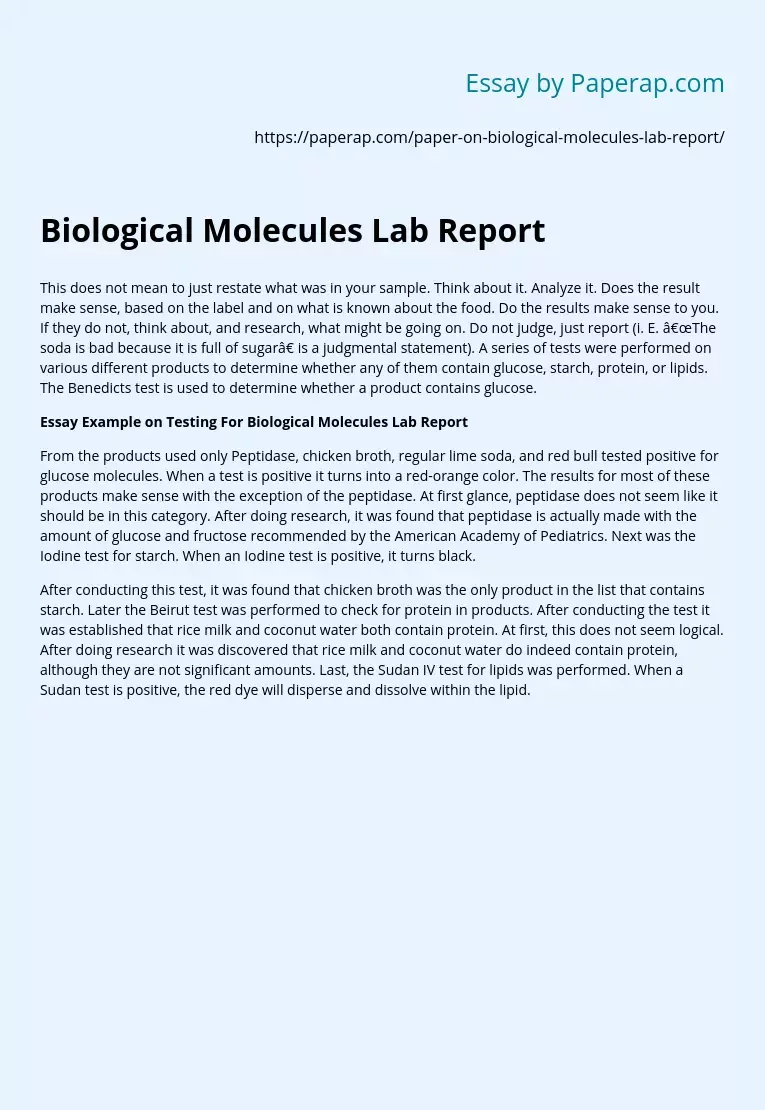Biological Molecules Lab Report
This does not mean to just restate what was in your sample. Think about it. Analyze it. Does the result make sense, based on the label and on what is known about the food. Do the results make sense to you. If they do not, think about, and research, what might be going on. Do not judge, just report (i. E. “The soda is bad because it is full of sugar” is a judgmental statement). A series of tests were performed on various different products to determine whether any of them contain glucose, starch, protein, or lipids.
The Benedicts test is used to determine whether a product contains glucose.
Essay Example on Testing For Biological Molecules Lab Report
From the products used only Peptidase, chicken broth, regular lime soda, and red bull tested positive for glucose molecules. When a test is positive it turns into a red-orange color. The results for most of these products make sense with the exception of the peptidase.
At first glance, peptidase does not seem like it should be in this category. After doing research, it was found that peptidase is actually made with the amount of glucose and fructose recommended by the American Academy of Pediatrics. Next was the Iodine test for starch. When an Iodine test is positive, it turns black.
After conducting this test, it was found that chicken broth was the only product in the list that contains starch. Later the Beirut test was performed to check for protein in products. After conducting the test it was established that rice milk and coconut water both contain protein.
At first, this does not seem logical. After doing research it was discovered that rice milk and coconut water do indeed contain protein, although they are not significant amounts. Last, the Sudan IV test for lipids was performed. When a Sudan test is positive, the red dye will disperse and dissolve within the lipid.
Biological Molecules Lab Report. (2019, Nov 27). Retrieved from https://paperap.com/paper-on-biological-molecules-lab-report/

